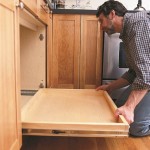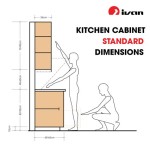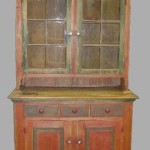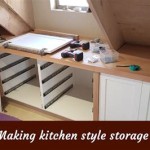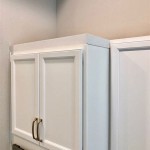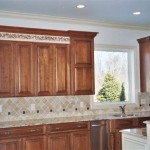1930s Kitchen Cabinets: A Glimpse into a Bygone Era
The 1930s were a period of significant change and transition in American society, and this was reflected in the design and functionality of kitchen cabinets. As the decade progressed, the country emerged from the Great Depression, and a renewed focus on practicality and affordability became paramount in household design. This article delves into the defining characteristics of 1930s kitchen cabinets, examining their aesthetic, materials, and functionality within the context of the era's social and economic landscape.
Aesthetic and Style
1930s kitchen cabinets embodied the prevailing design trends of the era, characterized by a blend of Art Deco and Streamline Moderne influences. While Art Deco, with its geometric patterns and luxurious materials, remained visible in high-end kitchens, Streamline Moderne emerged as the dominant style for middle-class American homes. This style was defined by its emphasis on smooth, rounded lines, clean surfaces, and a focus on functionality.
Cabinet doors often featured simple, geometric designs, with panels inset into frames. These panels could be flat, raised, or recessed, creating subtle textural variations. Knobs and pulls were usually simple and streamlined, often made of brass or chrome. Colors were typically muted, with white, cream, and pale pastels being popular choices. These colors reflected the clean and airy aesthetic of the era, contrasting with the darker, more ornate finishes common in earlier periods.
Materials and Construction
The materials used in 1930s kitchen cabinets reflected the changing economic landscape. While earlier decades saw widespread use of expensive hardwoods like mahogany and oak, the Great Depression led to a greater emphasis on affordability. This resulted in a shift towards less expensive materials such as pine, birch, and maple, often with a painted finish.
Cabinets were typically constructed using traditional joinery techniques, with dovetail joints and mortise-and-tenon joints being common. However, the rise of mass production techniques led to the increasing use of less labor-intensive methods, such as dado joints and glue assemblies. This shift reflected the growing demand for affordable, mass-produced furniture in the post-Depression era.
Functionality and Layout
1930s kitchen cabinets were designed with a strong emphasis on functionality. As the role of the kitchen evolved from a purely utilitarian space to a more social hub, the need for efficient storage and work surfaces became increasingly important. This was reflected in the design of cabinets, which were often integrated into a larger kitchen layout that maximized space and promoted efficient workflows.
Common features included built-in pantries, pull-out shelves, and drawers designed to accommodate specific kitchen tools. Storage was often organized vertically, with shelves and cupboards reaching high above the countertop. The advent of new appliances, such as the electric refrigerator, also influenced the layout of 1930s kitchens. Built-in refrigerators began to replace freestanding models, necessitating dedicated cabinet space for these appliances.
Cultural Context
1930s kitchen cabinets were not only a reflection of design trends but also of the broader social and economic context of the era. The Great Depression had a profound impact on American households, leading to a renewed appreciation for practicality and affordability.
The emergence of new manufacturing technologies, coupled with the growing popularity of magazines and home design books, facilitated the spread of mass-produced kitchen cabinets. This led to a greater standardization of kitchen layouts and design elements, contributing to a sense of shared aesthetic and functionality across American homes.
In Conclusion
1930s kitchen cabinets offer a glimpse into a bygone era, revealing a blend of style, functionality, and the cultural influences of the time. From their streamlined aesthetic to their emphasis on efficient storage, these cabinets embody the evolving role of the kitchen as a space for both work and social interaction.

A 1930s Green Kitchen Brightens Up In The Bronx Sweeten Com

1930s Kitchen Archives Nr Hiller Design

1930s Kitchen Intact Remodel Designs Layout Vintage Bungalow

100 Yrs Of Kitchen Style And What S Popular Today Cabinetcorp

See This Grimy 1930s Kitchen After A Sleek And Modern Makeover

A Kitchen Remodel In Historic Filipinotown Los Angeles

1930 Kitchen Gordon Van Tine Catalog Bungalow 1930s

Lauryn And Dennis 1939 Humble Kitchen Makeover 20 Photos Retro Renovation

Lauryn And Dennis 1939 Humble Kitchen Makeover 20 Photos Retro Renovation

Red 1910 Kitchenthe Pretty Tile Floor Dates To The 1930 Renovation Cabinets Are Likely Origina Art Deco Kitchen Vintage Decor Kitschy
Related Posts

